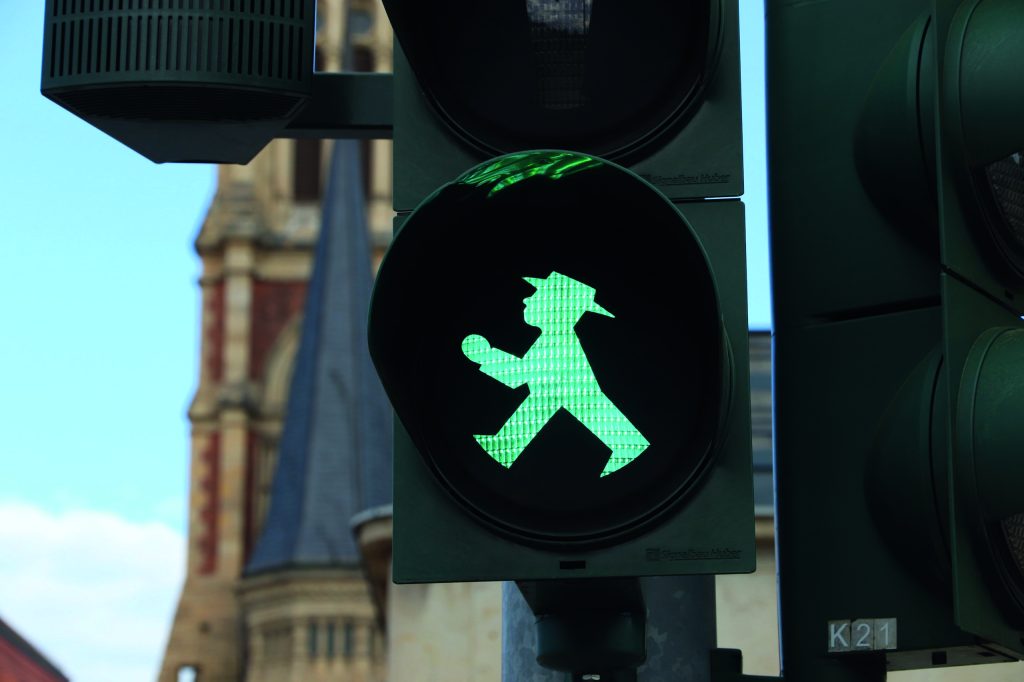In December 2019, I arrived in Berlin by train. I was just married and on honeymoon. The most precious item in my luggage was my Interrail ticket. My husband and I hoped to visit as much of the Continent as we could in three weeks. We did not know that soon such a trip would be impossible, thanks to the infamous virus from China.
We were keen to see what remained of the Berlin Wall. One of the longest still standing parts is on Niederkirchnerstrasse, next to the site of the former headquarters of the SS and the Gestapo, now home to the Topography of Terror, an indoor and outdoor museum dedicated to the Nazi era. The nearest bus stop is by Checkpoint Charlie, now a spot surrounded by booths selling faux-communist gewgaws and touts offering rides in ‘Trabi’ cars, the old East German Trabants.
The Wall came down the month before I was born. Thirty years later, I found it hard to imagine that this deteriorating lump of concrete and iron in front of me once divided the city. Berlin is now full of the same hipsters you see in all major cities. They like asymmetrical haircuts, whitewashed coffee shops and plugs everywhere so they can charge their devices. They don’t like walls.
We spotted other relics from the city’s past. The pedestrian traffic lights on the street corners feature a jolly-looking figure known as Ampelmännchen (‘little traffic light man’). He is a symbol rescued from East Berlin after the fall of the Wall. As attempts were made to standardize all traffic signs across Berlin during reunification, Ampelmännchen was initially confined to the scrapheap. But over
the following few years, a campaign saved him. He can be seen all around the former German Democratic Republic and in some parts of western Berlin
In the evening, over a plate of Peking duck, our friend Kate explained the nostalgia for communist rule, which Germans refer to as Ostalgie. To cater to those experiencing bouts of Ostalgie, a handful of restaurants offer Soviet-era cuisine. Volkskammer, which is named after the GDR’s parliament, serves ‘counterfeit rabbit’, ‘cold dogs’ and ‘Hawaii toast’, which is white bread with a slice of ham, canned pineapple and processed cheese.
When the Wall came down, many East German women lost their jobs. Some of the older women who Kate works with mourned the demise of state-run kindergartens. To an outsider, the rows of Soviet-era housing blocks look profoundly depressing. For some locals, they represent a better time.
Nostalgia is transmitted through the ages in unpredictable ways. Despite enjoying freedoms unimaginable to their elders, younger Berliners seem to want their lives to look as austere as possible. In a bar in the Kreuzberg district, which had no name and just the word ‘Fuck’ graffitied on the portico, everyone my age was wearing black. The walls of the bar were stripped down so that they resembled the part of the Berlin Wall I had seen earlier in the day.
We had lunch with another friend in her local ramen bar. She also lamented the world she lived in. Rents had risen by 20 percent in the past year. Ruthless tech start-ups were exploiting the hopeful dreamers who had flocked to the city from the rest of Europe in the past few decades, wanting to build something better than what had come before.
We had traveled to Berlin by train from Amsterdam, a city which clings much more obviously to its past. We had stayed in a hotel called the Dylan, which felt as though it had been designed by Vermeer. Much like the British, the Dutch are confronting the fact that their glorious buildings and vast collections of art were often funded by the exploitation of others. There had been a recent disagreement between two of the city’s museums. The Amsterdam Museum had decided it would drop the term ‘Golden Age’ as a way of describing the 17th century, when the Dutch Republic was at the pinnacle of its trading power. The Rijksmuseum, however, said it would continue to use the term. Debates like this are quite normal. If 20th-century European history was characterized by actual war, the 21st-century has so far been defined predominantly by culture war. The pandemic hasn’t changed that — not yet at least.
Every European town we passed through was decked out in pretty winter lights. We stayed in beautiful hotels in beautiful cities: the Aman in Venice, the Bristol in Vienna, the Bulgari in Milan, Le Meurice in Paris. Christmas markets filled the city squares, offering kitsch ornaments and mugs of Glühwein to crowds of revelers. On our last night in Berlin, at the Orania hotel in Kreuzberg, we woke to find a stocking hanging outside our room, filled with clementines and gingerbread. St Nicholas had come, another relic from the past lighting up the present. How quaint, we thought. What strikes me now is that travel has also become a relic.
This article was originally published in The Spectator’s January 2021 US edition.

























